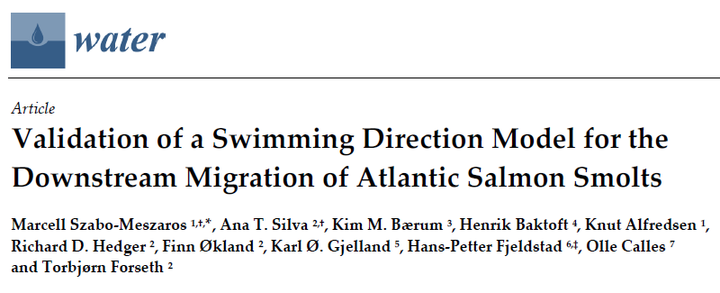Validation of a Swimming Direction Model for the Downstream Migration of Atlantic Salmon Smolts

Abstract
Fish swimming performance is strongly influenced by flow hydrodynamics, but little is known about the relation between fine‐scale fish movements and hydrodynamics based on in‐situ investigations. In the presented study, we validated the etho‐hydraulic fish swimming direction model presented in the River Mandal from Southern Norway, using similar behavioral and hydraulic data on salmon smolts from the River Orkla in Central Norway. The re‐parametrized model explained the variation of the swimming direction of fish in the Orkla system in same degree as the original model performed in the Mandal system (R2: 84% in both cases). The transferability of the model when using it from one river to predict swimming direction in the other river was lower (R2: 21% and 26%), but nevertheless relatively high given that the two localities differed in hydraulic conditions. The analyses thus provide support for the fact that the identified hydraulic parameters and their interaction affected smolt behavior in a similar way at the two sites, but that local parametrization of the base model is required. The developed etho‐hydraulic models can provide important insights into fish behavior and fish migration trajectories and can be developed into prediction models important for the future development of behavioral downstream migration solutions.